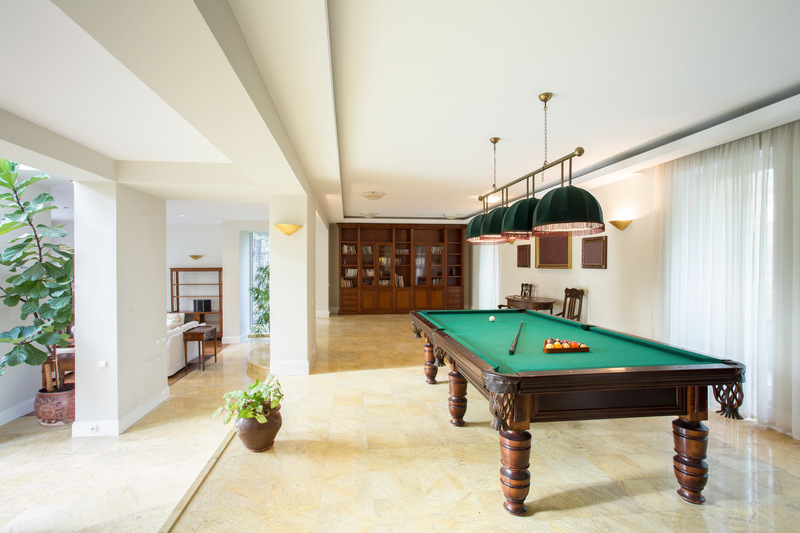Safeguard Your Home and Piano by Avoiding DIY Moves
Moving is a major life event, often filled with excitement, anticipation, and yes--stress. When it comes to relocating treasured possessions such as your piano, attempting a DIY move might seem like a good way to save money. However, there are many risks associated with moving large and delicate items by yourself. In this extensive guide, we'll explore why it's crucial to safeguard your home and instrument by letting professionals handle your piano move, and the many pitfalls homeowners face when choosing to do it themselves.

The True Value of Your Piano
A piano is more than just a musical instrument. Its intricate internal mechanisms and substantial financial and sentimental value make it a unique piece in any household. The process of moving a piano is nothing like shifting a couch or table. One misstep can lead to irreversible damage, potential injury, and even structural harm to your home. Understanding the true value of your piano is the first step to appreciating why moving it requires specialized care.
- Sentimental worth: Family heirlooms, childhood memories, or unique concert experiences are often tied to your piano.
- Monetary investment: Pianos range from affordable uprights to priceless grands, each requiring different precautions.
- Complex craftsmanship: With over 10,000 moving parts in a piano, the slightest jolt can cause expensive damage.
The Risks of DIY Piano Moves
Moving your piano yourself involves a host of risks--to the instrument, your home, and your well-being. Let's take a closer look at why relying on professional piano movers is the wisest choice to protect your cherished possessions and your property.
1. Risk of Damage to the Piano
Pianos are both heavy and fragile. Attempting to move one without appropriate expertise or equipment can result in:
- Exterior scratches and dents
- Internal mechanism misalignment
- Cracked legs or pedals
- Broken casters
- String or key damage
From grand pianos to uprights, each requires distinct handling techniques and protective measures that only professionals can provide. DIY moves often rely on makeshift padding and improper disassembly, leading to long-term damage.
2. Damage to Walls, Floors, and Doorways
A piano's bulk isn't just hazardous to itself--the surfaces of your home are equally vulnerable. In the process of maneuvering around corners or through tight spaces, DIY piano moves frequently result in:
- Wall gouges and paint scratches
- Chipped door frames or moldings
- Scuffed or dented floors, especially hardwood and tile
- Ripped carpeting
Repairing these issues after a move can be time-consuming and expensive, overshadowing any savings you might have gained by moving the piano yourself.
3. Personal Injury and Liability
Protecting yourself and those around you is paramount. Pianos can weigh anywhere from 300 to over 1,200 pounds. Lifting and transporting such weight without adequate training or equipment poses significant injury risks, including:
- Back and muscle strains or tears
- Crushed fingers and toes
- Slips, trips, and falls on stairs
- Risks to children or pets underfoot
If someone is injured during your DIY piano move, you could face costly medical bills or even legal liability. Is it worth the risk?
The Expertise of Professional Piano Movers
So why should you always leave piano moves to the pros? Experienced piano movers have the know-how and resources to ensure a safe, efficient, and stress-free relocation.
Specialized Equipment
- Piano skids--custom-built for sliding pianos safely
- Heavy-duty straps and harnesses for secure lifting
- Protective wrapping and padding specifically designed for instruments
- Climate-controlled trucks to guard against humidity and temperature fluctuations
Using the wrong equipment, as often happens during DIY moving attempts, frequently leads to damaging the instrument or your home.
Trained and Insured Teams
- Professional movers are trained to handle the complex structure and immense weight of pianos.
- They hold insurance specifically for piano transport, protecting you from financial loss in rare cases of accident or damage.
- Their expertise means efficient route planning, seamless navigation of tight spaces, and prevention of avoidable mishaps.
Preparation and Planning
A successful piano move isn't about brute strength alone--it's about strategic preparation. Professional piano movers will:
- Assess the piano's size, weight, and make
- Measure and plan the safest paths through your home
- Disassemble parts where necessary
- Coordinate transport to prevent jostling and shocks
This level of careful planning is something most DIY movers underestimate--often to their regret.
Why DIY Moves Don't Save Money in the Long Run
While it may seem like you're cutting costs by moving your piano yourself, the potential expenses of DIY moves frequently outweigh hiring professionals. Let's break down what you might end up paying for later:
- Repair bills--for both the piano and your home's damaged surfaces
- Medical expenses--for personal injuries or insurance deductibles
- Replacement costs--for broken casters, parts, or even entire instruments in the worst-case scenarios
- Rental costs--for inappropriate or inadequate moving equipment that you may not know how to use
Add to this the value of your time, the stress and anxiety of a DIY move, and the potential delays if you run into trouble, and the choice becomes clear.
Emotional and Historical Value: The Intangible Loss
For many piano owners, their instrument is irreplaceable. Whether it belonged to a beloved relative, holds the key (pun intended!) to a child's musical future, or is central to family traditions, the emotional pain of seeing it damaged is immense. Avoiding an amateur move not only protects its physical form, but also preserves priceless memories.
Preserving Musical Heritage
A piano's sound is shaped by its unique environment and care; improper handling can change its tone forever. Moving without professional assistance might turn a once-beautiful instrument into a shadow of itself, both in playability and appearance.
Common Myths About Moving Your Own Piano
A surprising number of homeowners fall for dangerous myths associated with DIY piano moving. Let's debunk a few:
- "Pianos are built tough--they can survive a move." Pianos are strong yet delicate, and easily affected by sudden jolts or temperature changes.
- "Six strong friends are all I need." Without proper technique and communication, manpower alone is not enough to safely lift and maneuver a piano.
- "Rental trucks and blankets will protect my piano." Generic moving equipment doesn't offer the specialized support a piano requires.
Professional Piano Moving vs DIY: A Step-by-Step Comparison
| Process | DIY Move | Professional Move |
|---|---|---|
| Assessment | Often skipped, leads to miscalculation | Full assessment of piano, property, routes |
| Equipment | Rental or household items not designed for pianos | Specially designed moving skids, ramps, trucks |
| Manpower | Friends/family, untrained | Experienced, trained teams with correct techniques |
| Insurance | None or insufficient | Full insurance coverage |
| Potential for Injury | High | Low |
| Risk to Piano | High | Low |
| Risk to Home | High | Low |
| Cost | Apparent savings, but can lead to high repair/replacement costs | Upfront cost, but overall savings by mitigating risks |
How to Choose a Reputable Piano Mover
Ready to safeguard your home and piano with a professional move? Here are some tips for selecting the right company:
- Ask about experience. Choose a company with years of dedicated piano-moving expertise, not just general movers.
- Request references. A reputable mover will have positive customer testimonials and reviews.
- Check insurance and licensing. Ensure full coverage specific to piano transport.
- Get a detailed estimate. A professional company will offer transparent pricing based on your specific requirements.
- Look for added services. Many piano movers also offer tuning, storage, or restoration services post-move.
Frequently Asked Questions About Professional Piano Moving
What types of pianos can professionals move?
Professional piano movers can safely handle all types of pianos, including upright, concert grand, baby grand, digital, and antique instruments.
How much does professional piano moving cost?
Prices vary, but costs typically reflect distance, piano type and size, number of stairs, and complexity of the move. A small investment up front prevents much larger losses later.
Do professional movers offer insurance?
Yes. Reputable piano movers provide specific insurance for safe transport, giving you peace of mind.
What should I do before moving day?
- Clear a path from the piano to the exit
- Lock piano lids/keyboard covers
- Remove fragile or loose items from the room
- Communicate any concerns or obstacles with your mover in advance
Will my piano need tuning after the move?
Most pianos require re-tuning after relocation due to movement and changes in environment. Ask your mover if they offer referral services for local tuners.

Conclusion: Protect What Matters Most
When it comes to moving, safeguarding your home and piano is not just about avoiding costs--it's about protecting memories, investments, and your family's safety. Trusting an experienced piano mover ensures peace of mind and preserves the heart of your home. The risks and hidden costs of a DIY piano move simply aren't worth it. Let the professionals do what they do best, and your piano will continue to fill your home with music for years to come.
Ready to Move? Choose Wisely!
If you're planning a move, don't let a well-intentioned DIY attempt put your home or piano in jeopardy. By budgeting for a professional mover, you're safeguarding both your property and priceless musical memories. Remember, when it comes to protecting your home and piano from moving damage, professional expertise is always worth the investment. Enjoy your music--leave the heavy lifting to the pros!



